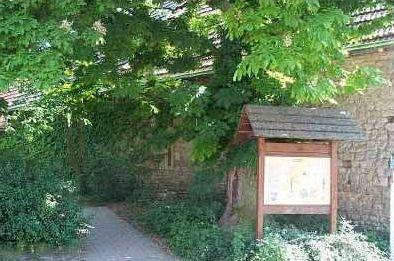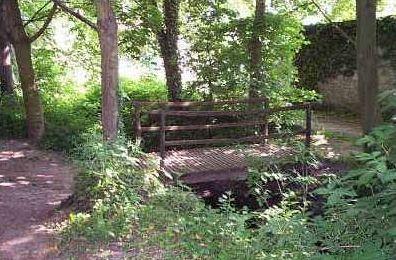The Moat or Rim of Elms

The moat embraces the Medieval village in the shape of a heart and with its high mounded ramparts it served as fortifications and a drainage ditch in case of a flood. The beginnings cannot exactly be determined. However, a quarrel between the Dalberg family and the community can be verified in the chronicle at the end of the 14th century. In this, one member of the Dalberg family declared a part of the moat his property. The ensuing trial ended in a settlement: one part was awarded to the community, one part to the Dalberg family.
The four streets leading
out of the village in all directions were particularly secured by
portculles (trellised gates) at the four gates: Hangen-Weisheim gate,
Flomborn gate, Dintesheim gate and Alzey gate.
At the beginning of
the last century elms (German words: Effe, Ulme, Rüster) were the
prevailing trees along the moat, which has been protected as the natural
monument "Rim of Elms" since 11th March 1927. Of course the Dutch elm
disease did not spare our "Allee" (colloquial name for the moat; means
tree-lined walk) either. Between 1967 and 1981 all elms had to be cut
down. 550 trees were then planted again.

Today people can stroll in the shade of oak, lime, maple, chestnut and resistant elm trees along the 1.3 km long circular walk.
The "Verschönerungsverein" has taken care of the "Rim of Elms" and the former ramparts have become a recreation area with interesting sights like the open-air theatre and a bird watcher path which tells you all about indigenous birds.
Since 30th September 1988 the appearance of the village with the moat has been under the protection of the Convention of The Hague.



